Canning & Preserving
Two weeks ago (still can’t really wrap my head around this fact), I headed back to culinary school for a day of canning & preserving. During our restaurant externships, we have three required classes, scattered throughout the 6 months, to learn some new and different skills. In another month’s time, I will be heading back for a cheese-making class! But more on that when the time comes…
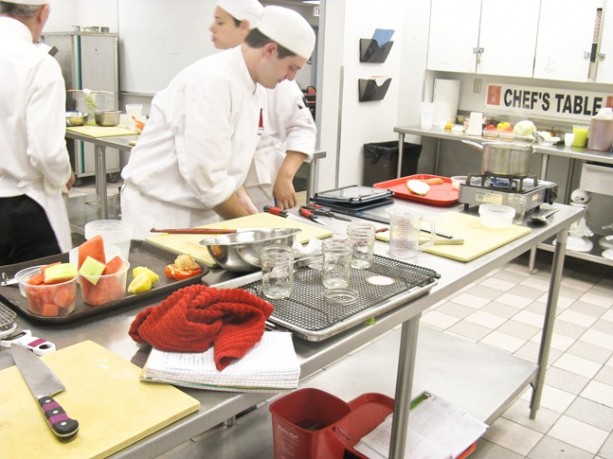
As excited as I was to go back to my familiar environment at school, I was even more excited to see and catch up with all my classmates, who I hadn’t seen in over a month. Lots of reuniting, hugging, and restaurant talk. Despite not having arrived from my sister’s wedding in California until that morning at 5 am, I somehow still had a lot of fun throughout the day.
I also gained a new appreciation and interest canning and preserving—something I really had no prior knowledge about until that day, besides a couple facts here and there. Makes sense given my obsession with mason and canning jars, right?!
Prior to the class, I always thought that canning & preserving required lots of specialized equipment. And while some forms of canning do (i.e. the pressure canning method), there are many forms of canning that you can do with just a very large canning pot, a rack, and some mason jars, which you can pick up at any hardware store.
Without going into too much detail about what we learned that day, I wanted to share a few facts of the day. Essentially, there are two forms of canning and preserving, using a hot water bath or pressure canning (which involves using a pressure canner). Whether or not you use one method or the other really depends on what you are trying to preserve.
Low-acid foods, which include most vegetables or meat, need to be canned using the pressure canner method to avoid the growth of bacteria (botulism) during storage. Using the pressure canner allows these low-acid foods to reach a temperature of 240 degrees, which is the temperature at which these bacteria are killed.
Whereas high-acid foods, which include most fruits, tomatoes, or pickled vegetables, only require the water bath method, which essentially involves placing the sterilized, filled jars into a rack lined pot, covered the jars with water by about two inches, and bringing it to a vigorous boil until the jars are sealed.
Obviously, more details are involved including how much head space to leave in the jar (which depends on the type of food you are canning), altitude differences, and changes depending on whether you are hot-packing or cold-packing the foods.
During the class, we ended up canning and preserving a bunch of different things, including:
- Rosemary Marinated Pork Loin (I never would of thought to can meat, but it tasted good)
- Granny Smith Apple & Pepper Jelly
- Mediterranean Pickled Cauliflower & Carrots
- Fennel
- Blueberry Star Anise Jam
- Clover Honey Orange Marmalade
- Pickled Lavender Scented Watermelon Rind
- Bruschetta
It was lots of fun and a very rewarding thing to do in the kitchen! Especially as a way to preserve all the fruits and vegetables of the summer throughout the year. To be honest, I’ve always wanted to learn how to can my tomato sauce that I make regularly—so I could simply open up a jar whenever I want. And now, I definitely will be tackling this at home at some point soon.
I even bought a few canning supplies (not necessary, but helpful) and a cheap canning pot (on Amazon) pretty soon after attending the class. It is definitely something I want to explore more in the kitchen and get creative with. Hopefully I’ll be able to make some time to experiment with it over the next couple weeks. I’ll be sure to share as I go!

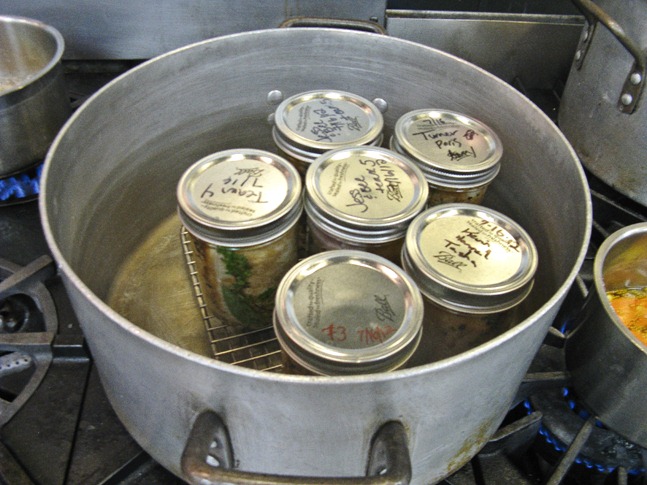
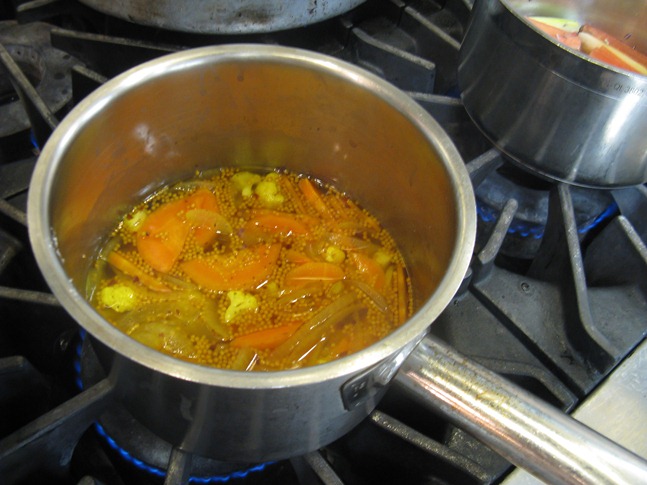
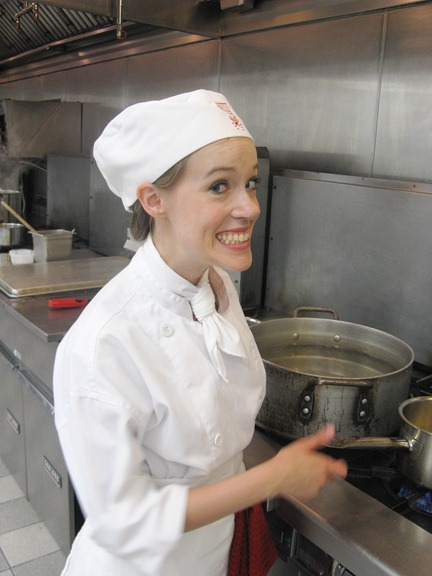
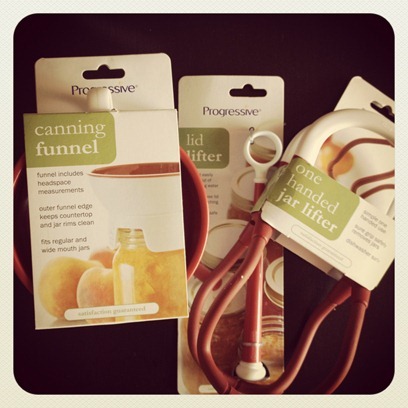
5 Comments on “Canning & Preserving”
The only time I canned blackcurrants I couldn’t open the jars so I haven’t done it since. Will try the above rhubarb compote in the hope I can open the jar. Spring in the UK.
Adrienne — Yes, definitely possible! I'm hoping to tackle this at some point this week and will be sure to let you know how it goes. Thanks for reading! 🙂
Edited to Add: Canning tomatoes is a bit tricky because they are not considered acidic enough, like most other fruits to use the boiling water bath method. You can definitely can whole tomatoes from the garden, but it requires adding acid in the form of bottled lemon juice or citric acid–otherwise, you must use a pressure canner. A bummer, I know!
Please do share! I'll have an abundance of tomatoes in my garden soon and I'd love to can them. Maybe in the form of marinara?
Jessica — Thank you for pointing this out!! I edited the post so no one misunderstands. That sounds awesome–I would love to can homemade soups someday when I have more time at home. Especially since homemade always beats store-bought, in price and taste.
I remember canning salsa with my Mom, and tomato sauce with my grandmother, when I was younger. I started canning on my own last year and splurged on a pressure canner. It was fun trying new recipes. One of my favourite things was canning a lot of home-made vegetable soup last fall…whenever I was feeling sick over the winter, I could open up a can of home-made soup, instead of having to make something myself or resorting to the store-bought cans.
One quick correction though – a pressure cooker and a pressure canner are two different things. They're similar, but a pressure canner will hold more pressure than a pressure cooker, so it's not recommended to use a pressure cooker for canning – it won't get up to the right pressure.